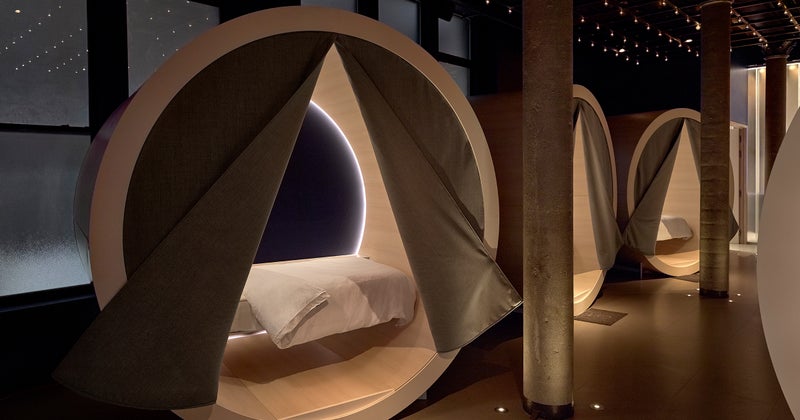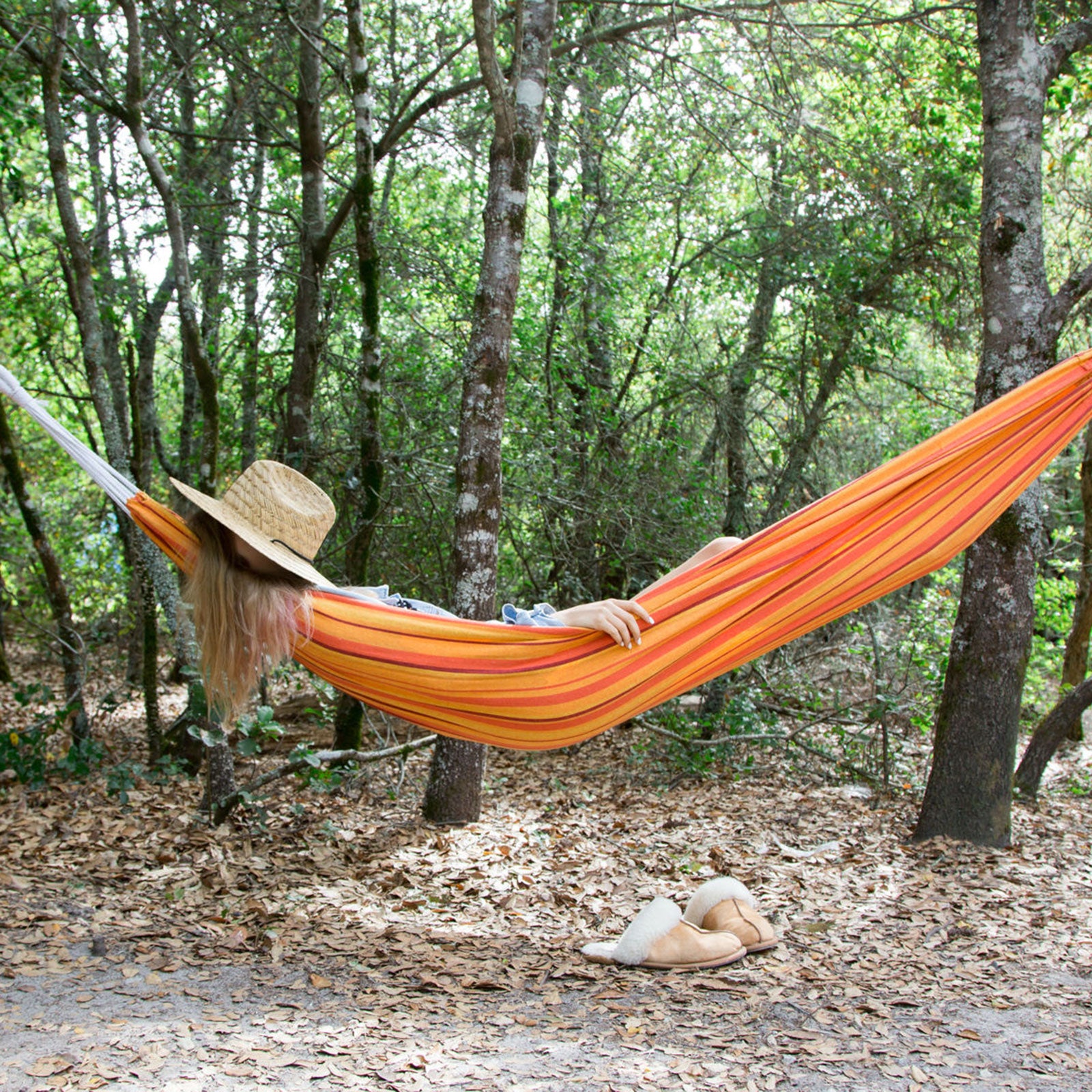In his memoir , Vladimir Nabokov, who was famously prone to insomnia, wrote: “Sleep is the most moronic fraternity in the world, with the heaviest dues and the crudest rituals.”
This thought came to mind during a recent visit to , where a 45-minute nap costs $25. After I checked in and changed into a pair of rental pajamas (night sky themed), a young woman named Kayla led me to one of the Dreamery’s nine sleep pods. If you’re picturing some tech wizardry à la Elon Musk, I’m afraid I have to disappoint. It’s basically a giant wooden cylinder that looks like it could house the world’s largest Camembert. I pulled back the curtain and discovered a duvet-covered mattress and pillow, along with a small card that read Sweet dreams, Martin. I would do my best. I got under the covers, switched off the bedside light, and closed my eyes.

The Dreamery is one of a number of nap studios (also known as nap bars or nap cafés) that have recently sprung up around the world, catering to our newfound respect for the importance of sleep. In London’s hypergentrified Shoreditch neighborhood, for instance, somnolent tech bros can seek refuge in a nap bar called , where a half-hour pod rental costs about $10. In Paris, the offers both a brick-and-mortar location and a mobile unit called the ZZZen Truck.
The general idea is to provide overstimulated urbanites with a quiet sanctuary where they can relax and, ideally, drift off. In a sense, the nap bar is an updated take on the capsule-hotel phenomenon, which took off in Japan in the nineties to provide weary salarymen with cheap, accessible accommodations. At the Dreamery, which is sponsored by the mattress company Casper, the meditation app Headspace supplies an overhead soundtrack of whirring nothingness. In addition to the pajama rental, visitors get earplugs and unlimited LaCroix. (Postnap coffee is also available.)
Why, you might be wondering, are people suddenly willing to pay for a nap?
At the Dreamery, which is sponsored by the mattress company Casper, the meditation app Headspace supplies an overhead soundtrack of whirring nothingness.
“I was a prototypical Washingtonian: harried, overworked, and burned out as a systems engineer,” says Daniel Turissini, the founder of Turissini, who claims that Recharj was the first nap studio in the U.S. when it opened in August 2016, notes that in an age where many companies have shifted to the open-office model, sleep has become a luxury made scarce by the lack of privacy in the American workplace. He’d heard from men who had dozed off in their office’s lactation rooms. Others were locking themselves in bathroom stalls.
Mauricio Villamizar, who cofounded Pop and Rest, says one reason he started his company was to introduce type A Londoners to the siesta culture of his native Colombia. Indeed, beyond providing more accessible places to sleep, one of the potential benefits of nap studios is that they might inspire broader acceptance of the midday snooze.
Rachel Salas, a sleep neurologist at Johns Hopkins Medicine, is also optimistic that nap bars could bring greater awareness to what she calls our national sleep epidemic. According to a 2016 survey published by the Centers for Disease Control and Prevention, more than a third of Americans are getting less than the minimum recommendation of seven hours of sleep per 24-hour period. Salas cautions, however, that nap bars probably shouldn’t be frequented by those who suffer from serious sleep disorders. “If you know that you have insomnia or a circadian-rhythm issue where you are not falling asleep until 2 or 3 A.M., you should really be talking to your health care provider first rather than going to a nap bar,” she says.
For some people, the idea of paying for a nap might sound a little dystopian. It’s the ultimate perversion of a society in which essential life requirements—water, exercise, sleep—have been commodified.
And maybe that’s why I couldn’t fall asleep during my brief stay at the Dreamery: the awareness that I was spending money to escape distraction became a distraction in itself. When the lamp above my bed began to brighten, signaling the end of my repose, I almost felt a little guilty. But soon after, the feeling was alleviated—I noticed that the Sweet Dreams, Martin card also listed my sleep pod’s Wi-Fi password (Casper). “In case you can’t sleep,” it read.


